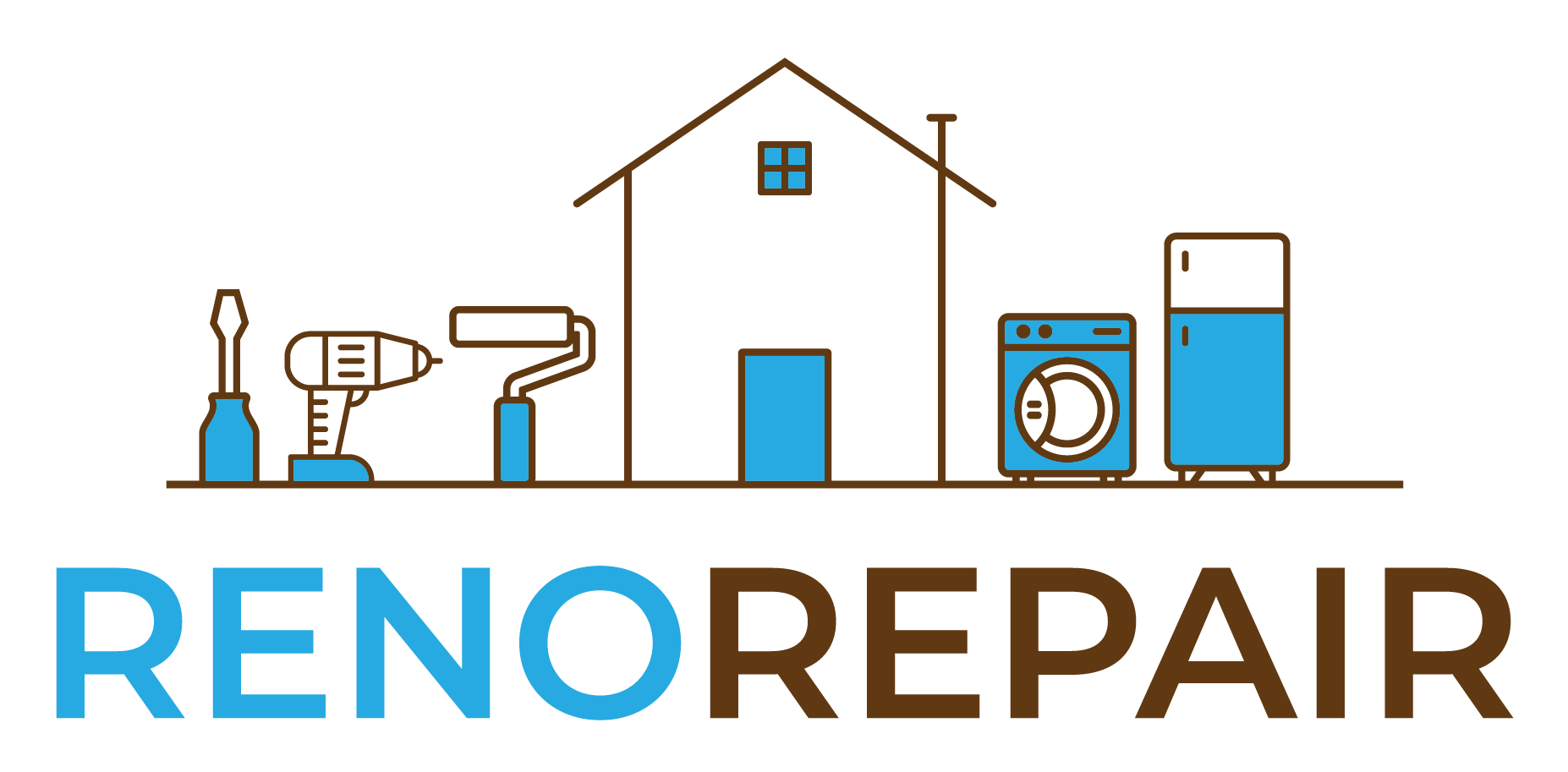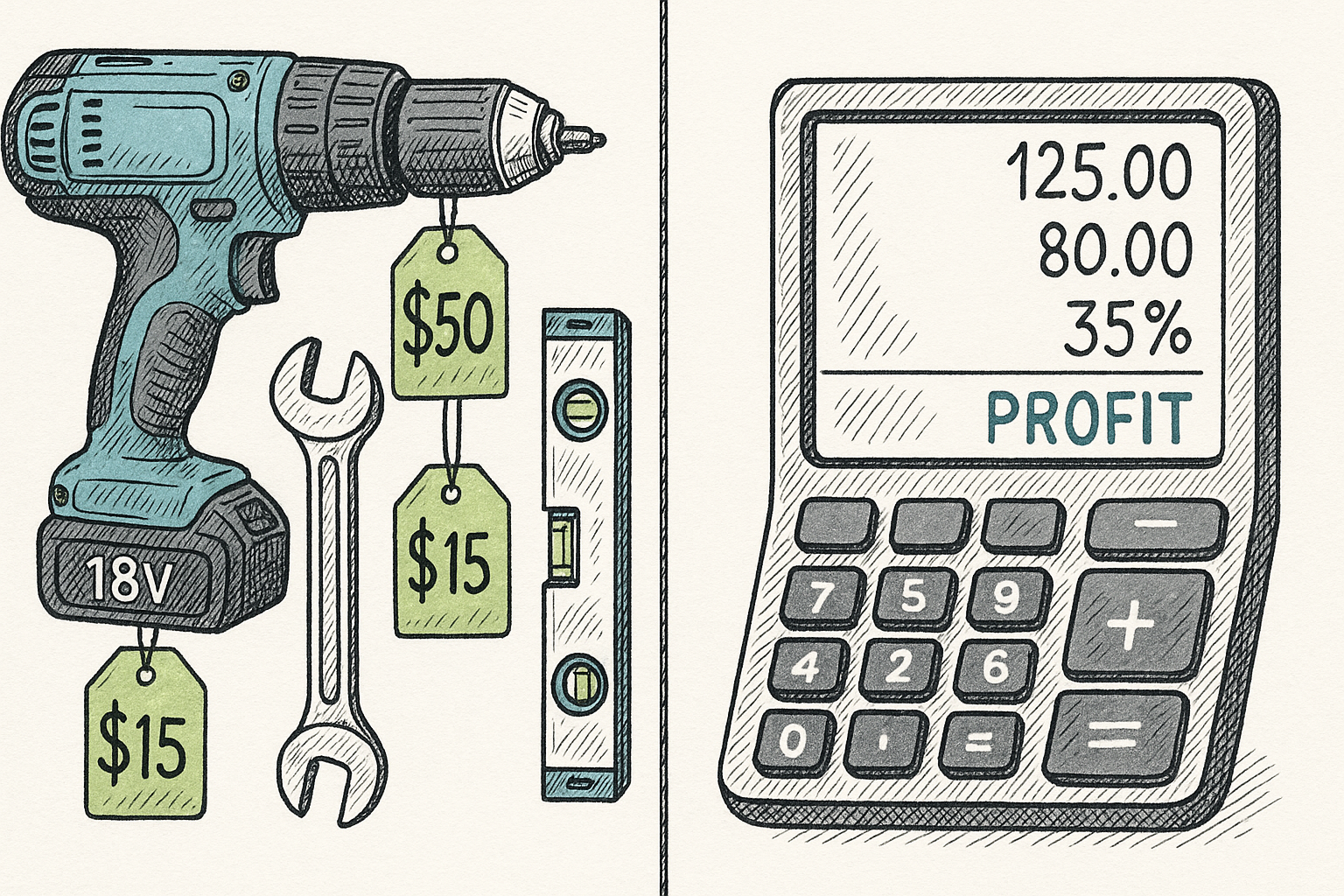Setting profitable flat rates isn’t about guessing what customers will pay—it’s about understanding your real costs and building in the right margins. Here’s how to price standardized services that protect your bottom line while staying competitive in the GTA market.
Start With Your True Hourly Cost
Before setting any flat rate, calculate what you actually need to earn per hour. This isn’t just your desired wage.
Your real hourly rate includes:
- Your target income
- Vehicle costs (gas, insurance, maintenance)
- Tool replacement and maintenance
- Insurance premiums
- Taxes (remember, you’re paying both portions of CPP/EI)
- Slow periods and unpaid administrative time
Example calculation for GTA contractor:
- Target annual income: $65,000
- Business expenses: $18,000
- Billable hours per year: 1,400 (factoring in admin time, travel, slow periods)
- Required hourly rate: ($65,000 + $18,000) ÷ 1,400 = $59/hour
Time Each Service Accurately
Track how long standardized jobs actually take, not how long you think they should take.
For new contractors: Start by timing similar tasks during your first 10-15 jobs. Include travel time to/from the job site, not just hands-on work time.
For experienced contractors: Review your historical data, but re-time services if you haven’t tracked them recently. Your efficiency may have improved, or job complexity may have changed.
Include these often-forgotten time costs:
- Initial customer consultation/walkthrough
- Material pickup (if you’re sourcing materials)
- Cleanup and final walkthrough
- Travel time between jobs
Factor in Material Costs and Markup
Fixed pricing requires predictable material costs. Research supplier prices for standard materials and build in a reasonable markup.
Material markup strategies:
- Beginners: 20-30% markup covers handling, storage, and occasional waste
- Established contractors: 35-50% markup if you’re providing convenience and warranty coverage
Pro tip: Negotiate bulk pricing with suppliers for commonly used items. Even small volume discounts improve your margins on flat-rate services.
Account for Job Complexity Variables
Not all “install ceiling fan” jobs are identical. Build your pricing around the most common scenario, but have clear conditions.
Price for the standard case:
- Existing electrical box in good condition
- Standard 8-foot ceiling height
- Easy attic access (if applicable)
- Customer provides fan
Clearly define what triggers additional charges:
- Non-standard ceiling heights
- Electrical box replacement needed
- Specialty mounting requirements
- Additional wiring work
Research Local Market Rates
Check competitor pricing, but don’t just match the lowest price. Look at what established, well-reviewed contractors charge for similar flat-rate services.
GTA market research sources:
- Online service platforms (TaskRabbit, Jiffy, etc.)
- Local contractor websites
- Home improvement store installation pricing
- Community Facebook groups where people discuss contractor costs
Price positioning strategy: Position yourself in the middle-to-upper range if you’re established, or slightly below market average if you’re building reputation.
Build in Profit Margin
Your flat rate should cover costs AND generate profit for business growth.
Minimum margin guidelines:
- New contractors: 15-20% profit margin after all costs
- Established contractors: 25-35% profit margin
Why profit margin matters: This money funds equipment upgrades, handles unexpected business expenses, and provides income during slow periods.
What NOT to Base Pricing On
Avoid these common pricing mistakes:
Don’t price based on what you think customers can afford. Price based on your business requirements. If your costs don’t align with market willingness to pay, the service isn’t viable for flat-rate pricing.
Don’t ignore overhead because you work from home. Vehicle costs, insurance, and business expenses exist whether you have a storefront or not.
Don’t price to match the cheapest competitor. Low-priced competitors often cut corners, skip insurance, or undervalue their time. You can’t compete on price alone without compromising quality or profitability.
Don’t forget to include warranty costs. If you guarantee your work, factor in occasional callback costs.
Test and Adjust Your Pricing
Start with calculated rates, then adjust based on real-world feedback.
Testing approach:
- Set initial pricing based on your cost calculations
- Track actual job profitability for 30 days
- Note which services consistently run over/under estimated time
- Adjust pricing for services that aren’t hitting target margins
Market feedback indicators:
- Conversion rate below 20%: Possibly overpriced for your market position
- Conversion rate above 60%: Potentially leaving money on the table
- Consistent time overruns: Underestimated job complexity
Price Confidently
Once you’ve calculated your rates properly, stick to them. Flat-rate pricing only works when you consistently deliver the quoted price.
Communicate value, not just price: Customers pay flat rates for predictability and convenience. Emphasize no surprises, upfront pricing, and professional service delivery.
Handle price objections professionally: If someone says your rate is too high, explain what’s included rather than immediately discounting. Quality contractors command higher prices.
Profitable flat-rate pricing requires understanding your real costs, timing jobs accurately, and building in appropriate margins. Take time to calculate properly—your business sustainability depends on getting these numbers right.

